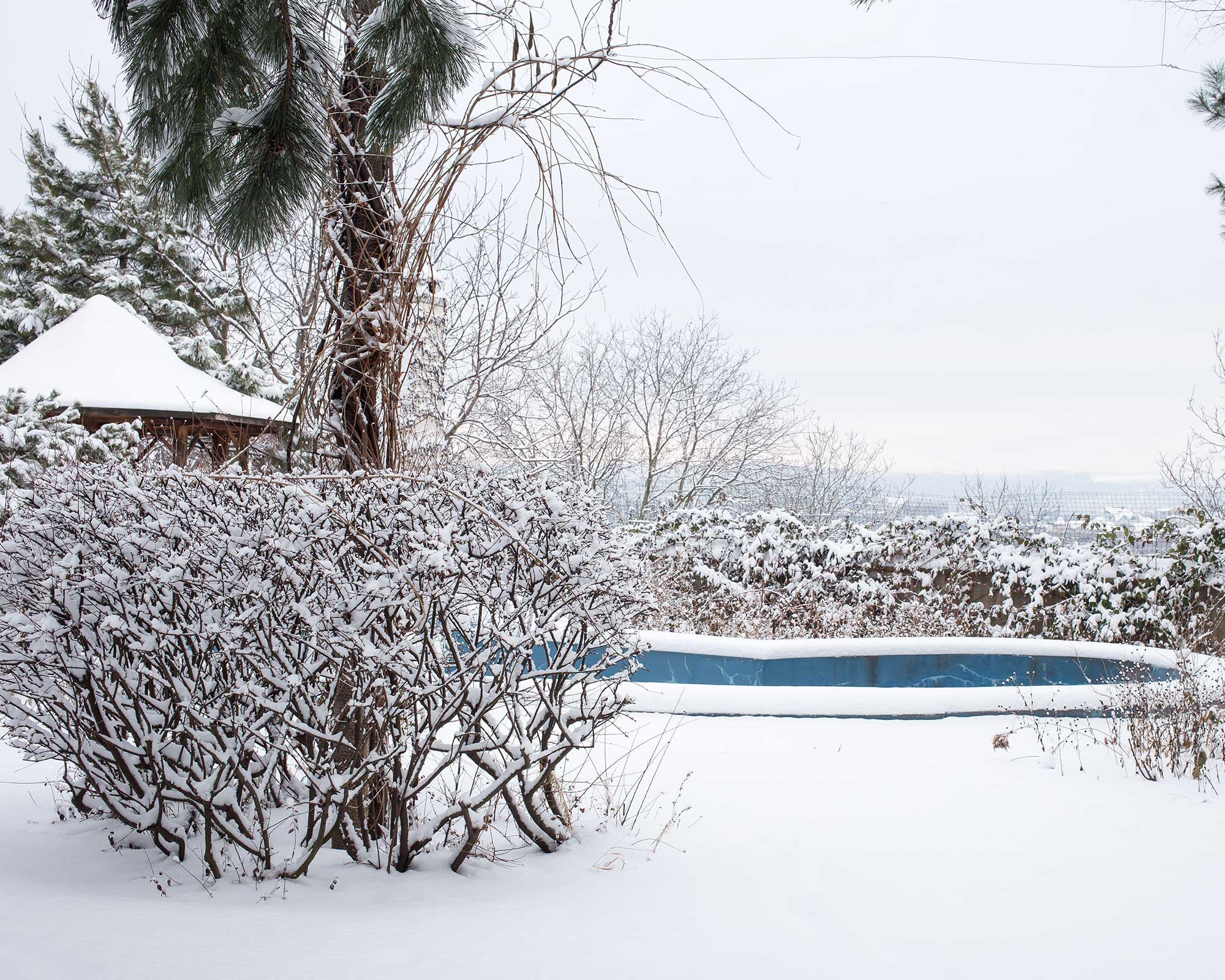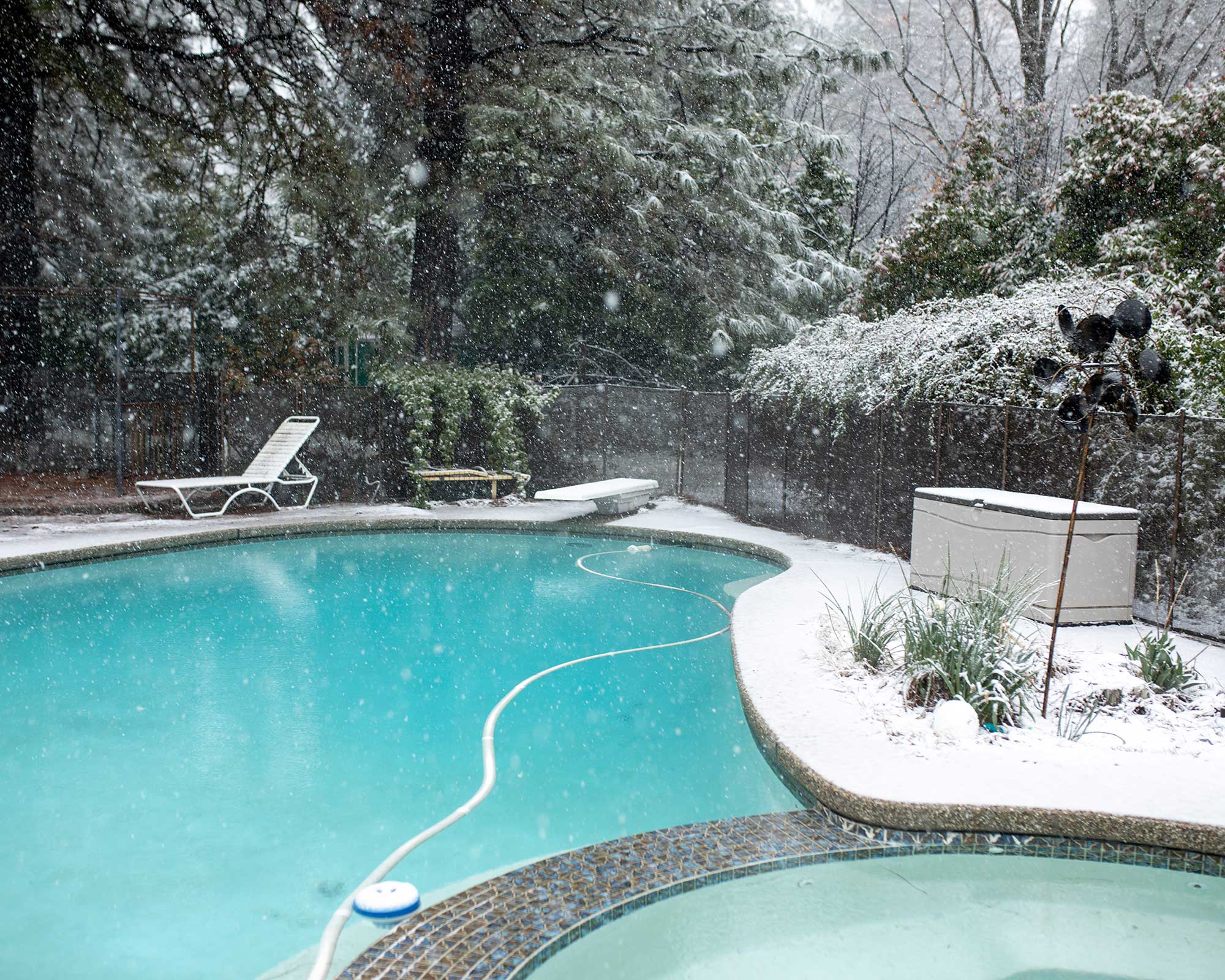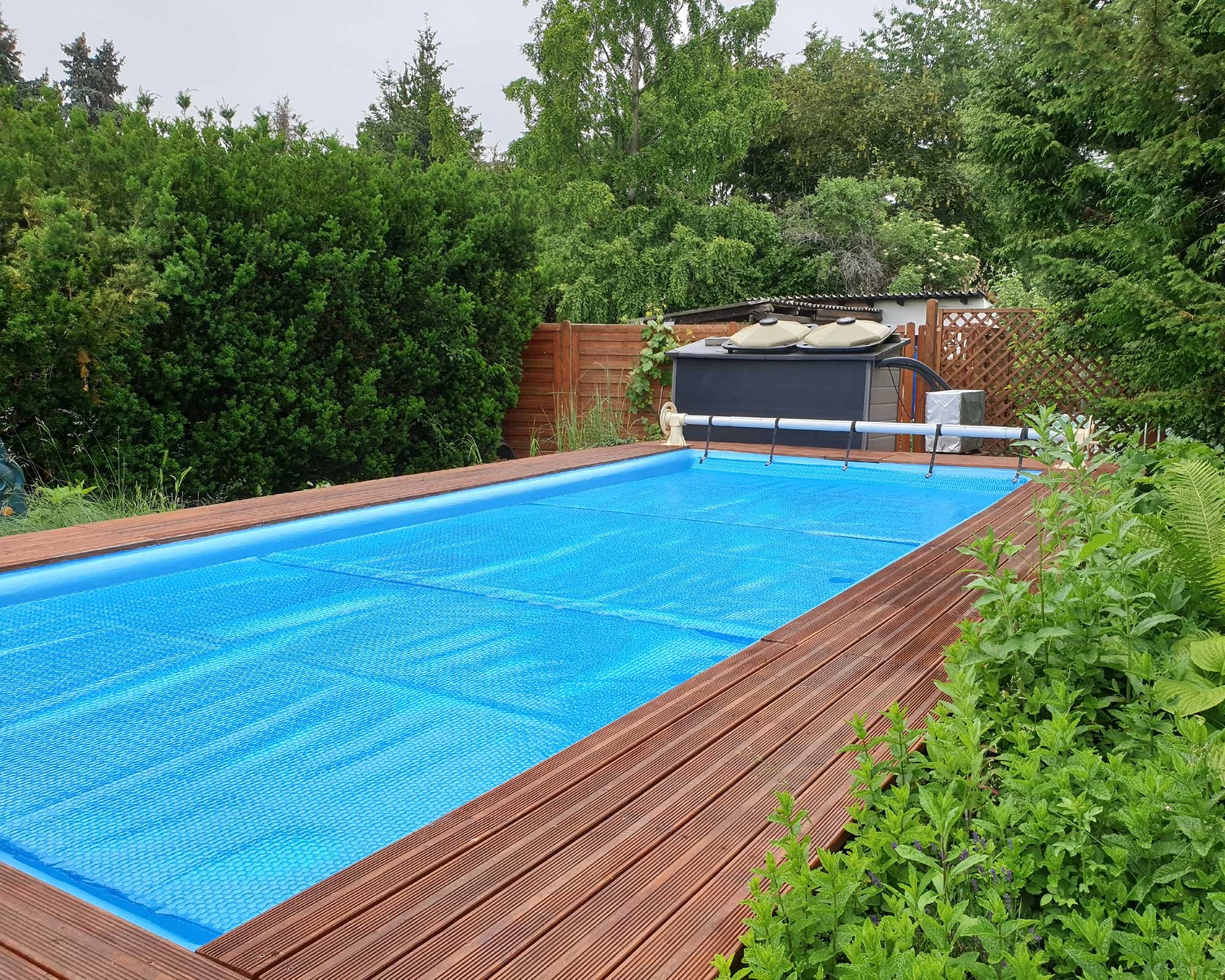How to winterize a pool: step-by-step tips to prepare for colder months
Our guide on how to winterize a pool is full of advice for keeping yours in top condition this season


Wondering how to winterize a pool? You'll find all the tips and tricks you need in this guide.
Pool ideas are a wonderful addition to a garden throughout the summer months. However, if you're not planning on using yours during winter, winterization is vital for keeping it in top condition and protecting it from the elements.
'Winterization is a term used for preparing your pool for the winter, and it is a process that can help ensure that your pool does not become damaged and your equipment is protected during the colder months of the year,' explains the SPATA (The Swimming Pool & Allied Trade Association) team. They share all their top tips on how to winterize a pool below, including when to get started and how to open it back up again in spring.

A practical guide on how to winterize a pool
SPATA recommends hiring a contractor to carry out the work for winterizing a pool. 'It means a professional eye will be cast over the systems, and any servicing, repairs, etc., can be carried out over the winter shutdown,' they say. However, it can still be useful to know the basics in how to winterize a pool – and this guide explains all.
When should you winterize a pool?
'Once the swimming season has finished, you must prepare for winter and the coming months of inactivity – winterization,' says SPATA. 'The weather usually starts to turn colder in the UK between the end of September to the beginning of October.
'It is vital to winterize your swimming pool before the frost begins,' they advise. By the time it has become cold enough for ice to form in the water, it is often too late, and damage to your equipment could already have been done.
'You must prepare for the cold weather and guard against frost damage, as severe frosts can burst pipes, heaters, and filters,' they explain. 'In addition, if any major work is needed for your pool, then the winter is the time to plan it.'
'The pool should be run and disinfected correctly right up until it is winterized, even if the heating is turned off,' they continue. Once winterized, algae will not stop growing, but the level of regular pool maintenance required is very much less than during the spring/summer season.
'There are no hard and fast rules governing the actual date of winterizing,' they continue. 'However, the lower the ambient temperature becomes, the more expensive the heating becomes.' And, 'should you have a lot of trees around the pool, you may wish to leave the closedown date until after the leaves have fallen,' they add.

How to winterize a pool: choosing your approach
There are two different approaches for winterizing a pool, as SPATA explains. One entails switching everything off, while with the other, your pump stays on yet only activates for an hour or so each day (or more if conditions are freezing). Either one has pros and cons, which can be explained to you by your professional contractor.
General jobs for winterizing a pool
As well as the core process for winterizing a pool (explained below), there are some other jobs that need doing to prepare the space for the colder months:
- All floating, summertime covers should be removed from the pool, advises SPATA. They should then be cleaned, carefully dried, and stored somewhere safely away from vermin – a secure pool house or shed, for instance. Slatted covers should also be cleaned and rolled away for the winter, they add. Replace summer covers with winter ones. 'The fitting of a proper winter cover will help keep the majority of debris and sunlight out of the pool.'
- Remove, clean and store all other poolside equipment.
- De-leaf and clean the pool.
- 'Check the chemical values and adjust, including a shock dose,' says SPATA. 'There are a number of chemicals available that are long-lasting and suitable for winterization. However, the variance of winter weather and temperature affects the longevity of these products, and occasional testing is recommended.'
- The condition of all filtration, heating and cleaning equipment should be checked by a professional and serviced if needs be.

Option 1: lower the water level and switch everything off
Now, for the winterization process itself. The first option is simply to switch off the power on all systems and lower the water level, then amend the water condition with chemicals when needed. One of the pros of this approach is that it won't consume electricity over the season.
- 'Shut down all the systems (filtration, heating, treatment, etc.,),' says SPATA. 'Lower the pool water level to approximately 1ft (30cm) below the skimmers and plug and empty the skimmer as a frost precaution.' If you have a liner pool, seek professional advice for the optimum water level to lower to. This is important to reduce risk of damage to the structure.
- 'Turn off the electrical supply and drain the systems of water.'
- 'Disconnect, remove, and store the pumps in a warm environment (only disconnect and refit the pumps if electrically qualified to do so),' they continue. You can ask your contractor to fit appropriate plugs to the pump and socket connections (suitable for outdoor use) for you to do it, they add.
- 'Generally, leave the pool area and plant room in a tidy state.'
- Once the pool has been winterized, don't be tempted to ignore it. 'Check the water condition regularly and dose if required; this can be easily done by lifting one corner of the cover. Chemicals that dissolve quickly in the summer will be slower reacting in the winter, so pre-dissolving them is essential.'

Option 2: set the pump to run when needed
The second approach for winterizing a pool requires the installation of a frost-stat. Using this method often means that opening the pool back up again in spring is quicker and easier.
- 'Run the filter pump only by time clock control for one hour per day at midday, for example, and set the frost thermostat to 35.6°F (2ºC). This means that if the temperature drops below 35.6°F, the pump will operate continuously, thus preventing the water from freezing,' says SPATA.
- Install a bypass around the heater, drain the heater, and electrically disconnect, or switch off other equipment, they continue. 'If the pump is working, the water is moving, and freezing will not occur.' You may need to take action if there are power cuts during cold weather, in which case contact your pool maintenance company.
- 'You should backwash the filter once every two months or if the pool water level increases from rainfall,' they add. 'As a result, recommissioning and winterizing are easier and quicker, as only a vacuum and water balance check are likely needed.'
How do you recommission a pool after winter?
Once winter is over, you will, of course, need to get your pool up and running again as part of your spring garden jobs. This process is called recommissioning.
'There are no hard and fast rules laid down as to when to do this; it is entirely up to you,' says SPATA. However, they suggest the following factors to be taken into consideration...
Firstly, if you're hiring a professional, make sure to book in early to avoid the springtime rush. Remember, 'when the pool is recommissioned, you do not have to start the heater immediately if the weather is not quite right.'
Secondly, be aware that once the weather becomes warmer, algae will start to grow faster. 'Having a winter cover on the pool will be no deterrent, and you will have to begin chemically treating the water. As a guide, once the lawn starts to grow, the algae in the pool will also be growing.'
SPATA also notes that it is beneficial to top up the pool water above the operational level before the recommissioning work is done.

When it comes to the recommissioning process itself, they share the following steps as a general guide:
- Remove the winter cover from the pool, clean it off, dry and fold it, then store it away. These covers are easily pressure washed on the patio or lawn – our best pressure washer buying guide is full of top picks if you need one for the job.
- Clean the copings and surrounding pool deck to remove any mold or algae growth.
- Refit all the poolside equipment such as ladders and diving boards.
- If necessary, re-assemble all the filtration and heating equipment in the plant room. It's best to get a professional to do this for you.
- Start the equipment and thoroughly test it. Heaters should not be left running unless specific instructions have been received from a professional.
- Set all-time clocks for summer running.
- Check all valves for freedom of operation and ease if necessary.
- De-leaf the pool and vacuum, or set the pool cleaner in operation.
- Check and adjust the chemical values.
- Generally, tidy and clean the pool area and plant room.
'Once the pool has been recommissioned, it is a good idea to run the filter continually for the first few days, backwashing daily, to thoroughly clean and make the water shine,' adds SPATA. 'After that, you can revert to the normal regular weekly routine.'

The garden was always a big part of Holly's life growing up, as was the surrounding New Forest where she lived. Her appreciation for the great outdoors has only grown since then. She's been an allotment keeper, a professional gardener, and a botanical illustrator – plants are her passion.
